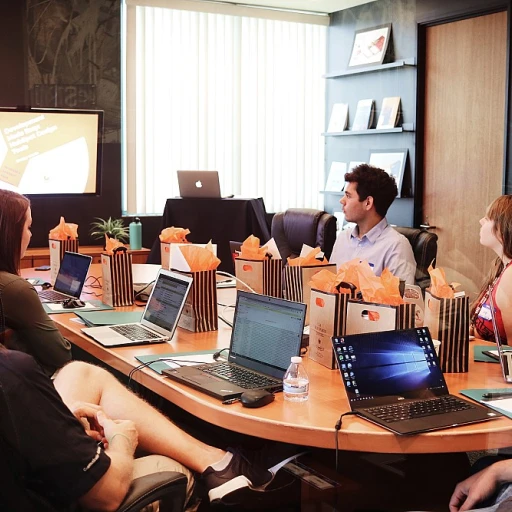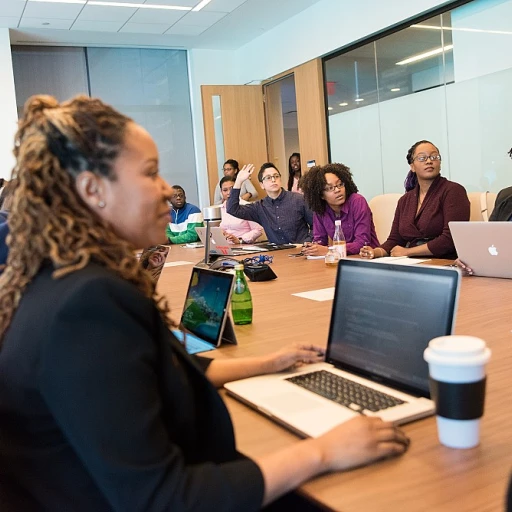
Understanding Centralized HR Systems
Exploring Centralized HR Infrastructure
Understanding the framework of a centralized HR system forms the bedrock of modern HR strategies. This approach consolidates the human resources management activities within a single central team or department, ensuring uniformity and consistency across the organization. A centralized system serves as a strategic model, streamlining processes such as recruitment, talent management, and performance management by housing them under one central management umbrella. This centralized recruiting approach, in contrast to decentralized recruitment methods, allows organizations to maintain a unified hiring process, which enhances employee experience and aligns with long term business goals. The organization benefits greatly from a centralized HR approach as it facilitates real time data management. Centralizing data aids in effective decision making and strategic initiatives. Instead of data being scattered across various departments, a centralized approach enables easy access and sharing of information, fostering a cohesive work environment and improving data management. Moreover, centralized management of HR processes supports consistent policy adherence and enhances compliance across diverse departments. This operating model ensures that policies and procedures are uniformly applied, minimizing discrepancies and fostering a cohesive employee experience across the organization. To understand more about how modern HR systems are structured and their strategic significance, you can explore the insights provided by human resource experts in this article on modern HR communication. These insights are vital for grasping how centralized HR systems can be effectively implemented and leveraged for the future of HR management.Streamlining Communication in HR
Improving Communication Pathways for HR Success
In the realm of human resources, effective communication is the backbone of a thriving work environment. A centralized HR approach significantly streamlines communication by establishing a direct line between HR departments and employees. This ensures that all organizational members, from the management team to individual employees, are on the same page regarding policies, procedures, and strategic initiatives.
For organizations shifting from a decentralized model to a centralized one, this restructuring can lead to more consistent messaging across the business. By consolidating HR functions into a central team, businesses can deliver information more efficiently, enhancing overall employee engagement. In doing so, HR departments can facilitate real-time communication and adapt to the dynamic needs of modern workplaces.
Moreover, centralized management can greatly benefit from a streamlined communication process during the hiring process. Centralized recruitment allows organizations to maintain consistency in their recruiting strategies and decision-making processes. This improved flow of information not only aids in recruiting top talent but also fosters a positive employee experience throughout the recruitment journey.
Efficient communication through centralized systems also assists in long-term strategic planning. When data management and performance management functions are housed within a centralized department, they can collaborate more effectively on future business goals. This creates a synergy within the organization, enabling departments to work together towards common objectives with a clear understanding of their roles and responsibilities.
Enhancing Employee Experience
Improving the Employee Journey
In the realm of human resources, enhancing the employee experience is a pivotal aspect of a centralized HR approach. When organizations adopt a centralized system, they create a cohesive environment where employees can thrive. This model allows for a more strategic alignment between HR policies and the overall business objectives, fostering a sense of belonging and engagement among employees.
Centralized management plays a crucial role in streamlining the employee engagement process. By having a central team dedicated to managing HR functions, organizations can ensure that communication is consistent and clear across all departments. This consistency helps in building trust and transparency, which are essential for a positive employee experience.
Facilitating Seamless Processes
With a centralized HR system, the recruitment and hiring process becomes more efficient. Centralized recruitment allows for better data management and real-time decision making, which are critical in attracting and retaining top talent. This approach not only enhances the efficiency of the recruitment process but also ensures that the organization's strategic initiatives are aligned with its talent management goals.
Moreover, centralized systems support the implementation of uniform policies and procedures, which are vital for maintaining a fair and equitable work environment. This uniformity helps in reducing confusion and ensures that all employees are treated equally, thereby enhancing their overall experience within the organization.
Long-Term Benefits for Employees
Adopting a centralized HR model offers long-term benefits for employees by providing them with a structured and supportive work environment. This model facilitates better performance management, allowing employees to receive timely feedback and support for their professional growth. As organizations continue to evolve, the centralized approach will play a significant role in shaping the future of employee experience, making it a strategic priority for HR departments.
Challenges of Implementing Centralized HR
Addressing Implementation Obstacles
Implementing a centralized HR approach can present several challenges, particularly for organizations transitioning from a decentralized model. These challenges can impact various facets of HR operations and overall business processes. Understanding these potential hurdles is crucial for effective decision making and long term strategic planning.
Firstly, change management is a significant challenge when shifting to a centralized system. Organizations often need to overhaul existing processes and policies, which may cause disruptions. Employees accustomed to decentralized recruitment processes may find the shift to centralized recruitment daunting, requiring clear communication and training to adapt effectively.
Another common obstacle involves data management. With centralized management, organizations are tasked with integrating data from multiple departments. Ensuring that data is accurate, accessible, and secure across the organization can be complex, necessitating robust data management systems to prevent data silos and ensure real-time information flow.
Additionally, balancing the needs of various departments while maintaining centralized control is often a delicate process. A centralized HR team must strive to enhance employee experience while meeting the strategic initiatives of each department. Navigating this can require the creation of flexible policies procedures that accommodate specific departmental needs without compromising the integrity of the centralized system.
Moreover, resistance from employees and departments used to a decentralized approach may pose a challenge. Fostering employee engagement during the transition phase can help alleviate concerns and enhance the acceptance of new HR operating models.
Ultimately, organizations must anticipate these challenges and devise effective solutions to streamline the shift towards a centralized HR model, balancing efficiency with adaptability for future growth and innovation.
Technology's Role in Centralized HR
Integrating Technological Tools for Efficient HR Functionality
Incorporating technology into centralized HR systems is pivotal for effective management and improving organizational processes. Technology enables centralized teams to seamlessly manage data, streamline processes, and enhance the recruitment process, whether centralized or decentralized. Implementing robust HR software solutions ensures that the organization can maintain efficient real-time data management, crucial for strategic decision-making. Utilizing advanced HR technology can enhance employee experience by providing employees with instant access to HR-related information and self-service platforms. These tools facilitate communication between employees and HR departments, ensuring that processes such as performance management and employee engagement are smoothly executed. A centralized system equipped with technological capabilities also supports long-term strategic initiatives. With centralized data management, HR departments can better forecast future workforce needs and tailor policies procedures to align with evolving business objectives. Moreover, technology aids in centralizing talent management by automating the hiring process, enabling organizations to quickly adapt to changes in the workforce landscape. Technologies that support centralized recruitment enhance the efficiency of hiring processes, ensuring that teams can focus on strategic initiatives rather than administrative tasks. The integration of technology into centralized HR functions represents a strategic shift from traditional models, allowing organizations to navigate complexities with ease. As businesses evolve, so do the technological tools that support the centralized approach, continually refining how human resources contribute to achieving strategic business goals.Future Trends in Centralized HR
Embracing Technological Advancements
As organizations continue to evolve, the future of centralized HR systems will be heavily influenced by technological advancements. The integration of artificial intelligence and machine learning into HR processes is expected to revolutionize how data is managed and utilized. This will not only streamline the recruitment process but also enhance decision making by providing real-time insights into employee performance and engagement.
Shifting Towards a Hybrid Model
While centralized management offers numerous benefits, some organizations may explore a hybrid model that combines elements of both centralized and decentralized recruitment strategies. This approach allows businesses to maintain a strategic oversight while empowering individual departments to tailor processes to their specific needs. Such flexibility can lead to improved employee experience and long-term talent management.
Focus on Strategic Initiatives
In the future, HR departments will likely place a greater emphasis on strategic initiatives that align with broader business goals. This shift will require HR professionals to develop skills in data management and analytics, enabling them to contribute more effectively to the organization's strategic direction. By leveraging a centralized system, HR teams can ensure that policies and procedures are consistently applied across the organization, fostering a cohesive work environment.
Enhancing Employee Engagement
Centralized HR systems will play a crucial role in enhancing employee engagement by providing a seamless and efficient experience. As organizations adopt more sophisticated tools for performance management and employee feedback, the central team will be better equipped to address employee needs and foster a positive work culture. This focus on engagement will be vital for attracting and retaining top talent in an increasingly competitive market.










